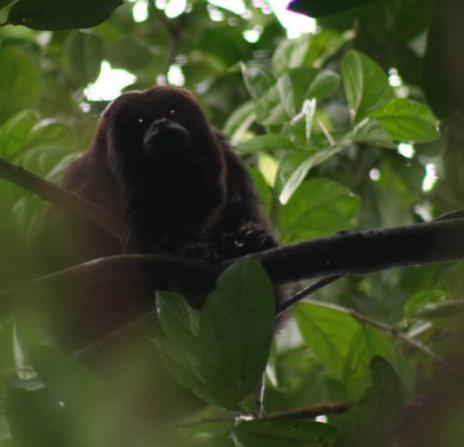Hi all!
Janie and I arrived in Guatemala City on June 13th and headed to EcoLogic’s regional headquarters in Quetzaltenango (affectionately known as Xela, by its Mayan name). While crashing on the floor of an extra room in the EcoLogic office, we spent about a week and a half re-familiarizing ourselves with the work EcoLogic is doing in agroforestry—which involves planting trees with corn, I’ll get to the details further down the page.
 |
| Home Sweet Home - at least for a few days. |
We became interested in EcoLogic when we wrote a case study on the organization for a class on climate change and the global food system. We worked closely with Senior Program Officer David Kramer and to gained an understanding and appreciation of EcoLogic’s mission, goals, and projects. We are particularly interested in helping establish an effective monitoring and evaluation (M/E) system for EcoLogic’s agroforestry project. In essence, we’ll be keeping track of progress, measuring success (or failure), and trying to get a sense of what should be changed. So now we’re here in Guatemala for three months speaking to people in the fields—quite literally—and coming up with a set of recommendations for project modifications.
 |
| That's Don Augustín to the left, the greenhouse manager in Totonicapán with técnico Fernando Recancoj and Janie showing off some saplings in a newly constructed greenhouse. |
The agroforestry system that EcoLogic promotes is based on the research of the Inga Foundation, which employs a nitrogen fixing tree, Inga edulis, planted in alleys between rows of corn (known as alley-cropping). This technique provides farmers with several advantages: shade from the trees reduces the amount of herbicides they need to kill weeds, the dead leaves from the trees decompose to provide a rich layer of nutrient-rich humus or compost, and finally before the corn is planted, the trees have their branches cut which is often used for firewood, reducing the need to take fuel wood from neighboring forests.
 |
| A farmer standing proudly by her agroforestry plot in Guatemala. |
After our stay in Xela we headed up to Ixcán, about an hour south of the Mexican border, to see this agroforestry system firsthand. After 9 hours crammed into a minivan, we finally arrived in the town of Playa Grande, where we were welcomed by EcoLogic’s técnico, Antonio Chipel. Nursing our bruised knees and aching backs, we plunged right into work the next day. Bumping around in the back of a pick-up truck, we drove out to a community called Santa Maria Dolores. There, we spoke to farmers who have started working with Inga, visited plots of different ages, and tried out some of the measurements we had come up with to get a better idea of how things were going in the plots. Everyone we met was incredibly warm and open. Even though everyday left us drenched in sweat and dead tired.
Now, we've arrived in Livingston, Izabal where we will try to use what we learned from Antonio and the farmers in Santa Maria Dolores, Ixcán, to come up with a straight forward set of measurements and questions to keep track of how agroforestry systems are working here.
.jpg) |
| The food here is unbelievable! |
I have to make a brief mention of the food here: it is absolutely UNREAL—fresh corn tortillas mixed with beans and cream and perfectly cooked scrambled eggs for breakfast; a hearty vegetable stew for lunch with corn tamales; maybe a cheese and chicharron filled pupusa for dinner. Everything prepared fresh as you watch!
- Julian
Julian Moll-Rocek has done research in the Amazonian rainforests of Madre de Dios, Peru and Janie D’Ambrosia has previously worked on a national reserve in Southwest Kenya. Both Julian and Janie have degrees in organismic and evolutionary biology, a field that looks at the function, evolution and interaction of organisms—or in this instance, how crops and trees can work together and integrate beneficially into the broader natural ecosystem. They are also showing our field staff techniques to use new technology (such as GPS) to create more accurate maps and georeference the agroforestry plots of the farmers we work with.



